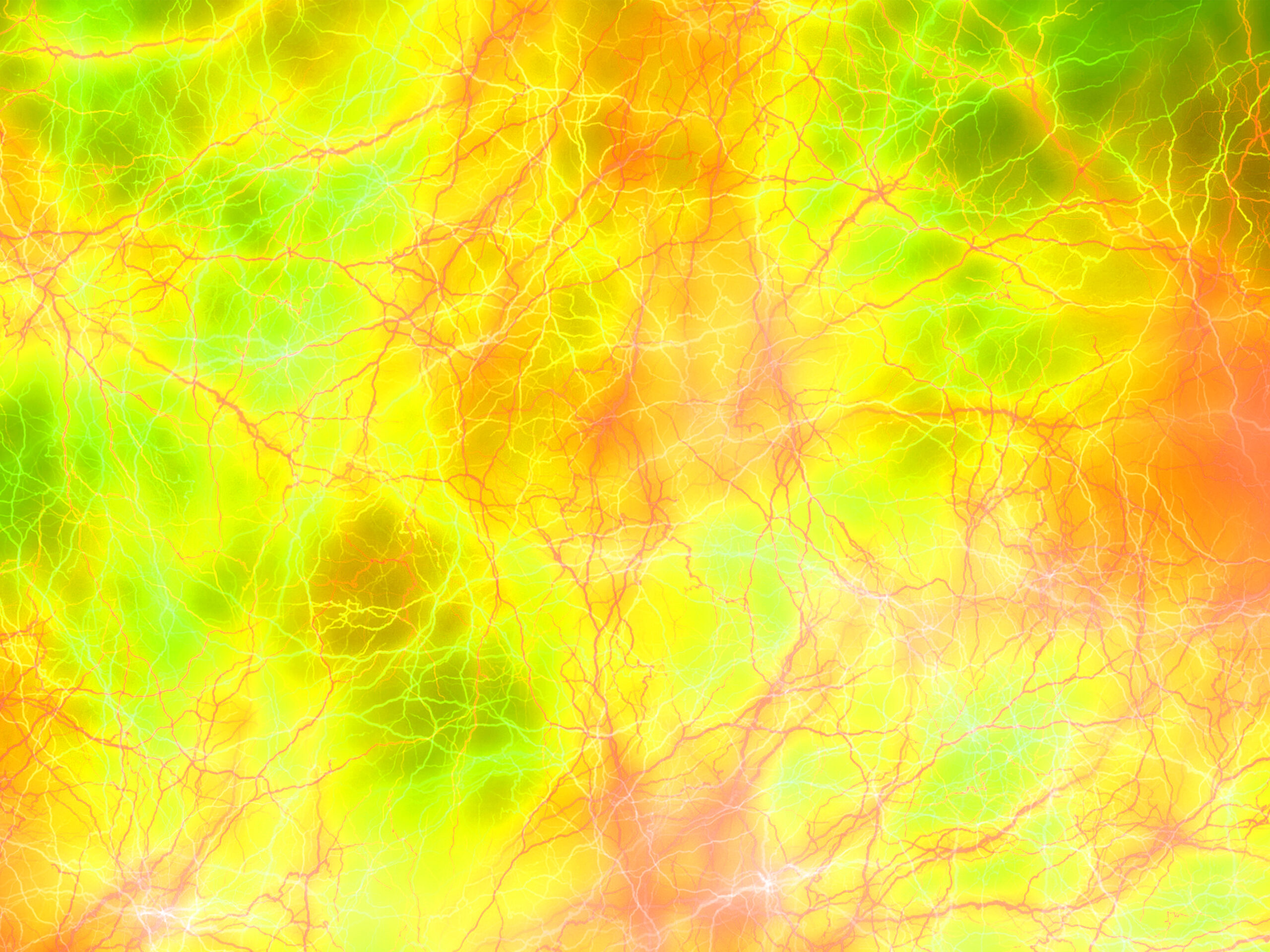
Samuel Adolphus Cartwright (November 3, 1793 – May 2, 1863) was an American physician who practiced in Mississippi and Louisiana in the antebellum United States. Cartwright is best known as the inventor of the ‘mental illness’ of drapetomania, the desire of a slave for freedom, and an outspoken critic of germ theory.[1][2]
Biography
Cartwright married Mary Wren of Natchez, Mississippi, in 1825.[3] During the American Civil War, he was a physician in the Confederate States Army and served in camps near Vicksburg and Port Hudson.[3] He was assigned with improving the sanitary conditions for the soldiers.[3]
Mississippi Encyclopedia has the following:
Dr. Samuel Adolphus Cartwright of Natchez was the most prominent physician, surgeon, and medical scientist in antebellum Mississippi. A prolific writer, he published more than eighty articles in the national medical press on a spectrum of topics, winning many medals and prizes for his original research and contributions to medical literature. His influence extended beyond medicine, and he involved himself in state and national politics, becoming a widely known slavery advocate and publishing articles on slave physiology and health.
Lucius M. Lampton, Center for Study of Southern Culture, Mississippi Encyclopedia website, July 10, 2017
Born on 30 November 1793 in Fairfax County, Virginia, Cartwright was the son of Rev. John S. Cartwright. His early education focused on Latin and Greek, and by his late teenage years he had begun studying medicine. His medical education was disrupted by his enlistment in the War of 1812. Battlefield injuries left him with a mild deafness that worsened progressively over the rest of his life. After completing his military service, he resumed his studies at the University of Pennsylvania, the first US medical school. Cartwright received additional medical training in Maryland and at Kentucky’s Transylvania University. He began practicing medicine in Huntsville, Alabama, and soon moved to Mississippi, practicing briefly in Monroe County in 1822. Within a year he established himself in Natchez, where he practiced for more than a quarter century and earned a reputation as the greatest medical mind in the Old Southwest.
In 1825 Cartwright married Mary Wren of Natchez. He wore many hats in the city and often spoke out regarding the period’s divisive politics. Politically, he was an enthusiastic Democrat and helped establish the Mississippi Statesman and Natchez Gazette, Mississippi’s first Jacksonian newspaper. According to a contemporary journalist, Cartwright could compose “a dissertation on Cayenne Pepper or Democracy with equal facility.” He became Natchez’s most prominent physician, earning a medical reputation that surpassed even that of his longtime friend, physician-historian John W. Monette. Among other prominent citizens, Cartwright’s patients included his friends Jefferson Davis and Gov. John A. Quitman, caring for him during his final illness.
Soon after Cartwright’s arrival in Natchez, the city suffered a yellow fever epidemic, and other outbreaks occurred through the 1830s. His training in Philadelphia had focused on the theories of Benjamin Rush, then considered the national authority on the disease, and Cartwright’s treatment methods, coupled with his scholarly publications examining the epidemics, soon earned him wide acclaim.
As early as 1822 his medical essays began attracting national attention, praise, and prizes. In addition to yellow fever, he published articles on cholera, diphtheria, syphilis, the uses of iodine, surgical removal of ovarian tumors, treatment of rectovaginal fistulas, and a “sugar-house cure of consumption.” His successful treatments and observations had great influence both nationally and in Europe. In 1831, for example, Cartwright announced in the American Journal of Medical Science a “contrivance” to drain the “thorax of liquids, excluding at the same time the admission of air,” and this essay subsequently received notice in the London Medical Gazette. He conducted extensive physiologic experiments on alligators, hoping to better understand human physiology, and used the results to develop theories on circulation and respiration. By 1836 his successful and lucrative medical practice allowed him to take his family on an eighteen-month European tour, which he documented in a two-volume diary. In January 1846 Cartwright was elected as first president of the Mississippi State Medical Society, organized in Jackson.
Cartwright focused his writings on the principal diseases of the southern states, and his peers recognized him as a specialist in southern diseases and medicine. His experience and research led him to conclude that the region’s climate resulted in different diseases than existed the North and that southern physicians consequently required different medical training than that provided in northern medical schools. He also stressed that blacks and whites were physiologically different and required different medical approaches. Nineteenth-century southern physicians had long discussed the role of ethnicity in medicine and health, noting decades before the Civil War that many black patients had different disease susceptibilities and medical outcomes than their white neighbors. As the nation drifted toward sectional conflict, doctors often attempted to use these ideas to provide scientific justifications for slavery and black inferiority. Cartwright revealed his racial views in an series of letters to Rev. William Winans published in 1843. Cartwright contended that the relation of master and slave was “not based upon human but Divine law” and concluded that the Bible doomed the “Ethiopian” to be a “servant of servants.” Cartwright’s extreme racial and prosouthern political views mingled with his medical research into what one contemporary physician-editor, Dr. John Bell of Philadelphia, derided as “States’ Rights Medicine.”
In the fall of 1848 Cartwright traveled to New Orleans in the midst of a cholera epidemic to study the disease at Charity Hospital and to witness autopsies on the cholera dead. Falling in love with the Crescent City, he decided to relocate his practice there and opened an office on Canal Street. The following year he published a forty-page book, The Pathology and Treatment of Cholera; with an Appendix Containing His Latest Instructions to Planters and Heads of Families in Regard to Its Prevention and Cure. At this time he entered his most prolific period of medical writing, publishing articles on diverse medical and surgical matters. However, his writing increasingly centered on the ethnology of disease, specifically the physiology of the “negro race” and the “Ethiopian.” In December 1849 the Louisiana State Medical Society appointed Cartwright to chair a committee to study the “Diseases and Physical Peculiarities of the Negro Race.” He published this report as a series of controversial articles in the New Orleans Medical and Surgical Journal from 1850 to 1853. He coined terms such as drapetomania (the “disease causing negroes to run away”) and dysaesthesia Aethiopis (a condition causing rascality). In 1851 Cartwright was appointed professor of “diseases of the Negro” at the University of Louisiana (now Tulane University). This appointment at a respected medical school reinforced his position as a national authority on black diseases and medicine.
By the time the Civil War erupted, Cartwright’s age and poor general health prevented his active service in the Confederate Army. In 1862 he advised his old friend and patient, Confederate president Jefferson Davis, that the Confederacy should utilize slaves as soldiers in place of “our tenderly bred gentlemen.” On 31 December 1862 Davis asked Cartwright to serve as surgeon general of the Confederacy’s Department of the West, then under the command of Gen. Joseph E. Johnston. By the end of January Cartwright had established himself in Jackson, Mississippi, and begun an extensive inspection of the medical conditions of Johnston’s armies, which involved an initial three-month study of the camps and hospitals serving such posts as Vicksburg, Port Hudson, and Grand Gulf. His appointment was not without controversy, with established physician officers of higher rank resenting his broad powers and often refusing to cooperate with his inspections. Despite his frail health and near total deafness, he committed himself fully to his work. While examining camps at Vicksburg, the sixty-nine-year-old physician suddenly took ill, and he died at a private residence near Jackson on 2 May 1863.
Slavery
The Medical Association of Louisiana charged Cartwright with investigating “the diseases and physical peculiarities of the negro race”. His report was delivered as a speech at its annual meeting on March 12, 1851, and published in its journal.[4] The most sensationalistic portions of it, on drapetomania and dysaesthesia aethiopica, were reprinted in DeBow’s Review.[5] He subsequently prepared an abbreviated version, with sources cited, for Southern Medical Reports.[6]
If they nonetheless became dissatisfied with their condition, they should be whipped to prevent them from running away.[5] In describing his theory and cure for drapetomania, Cartwright relied on passages of Christian scripture dealing with slavery.
Cartwright also invented another ‘disorder’, dysaesthesia aethiopica, a disease “affecting both mind and body.” Cartwright used his theory to explain the perceived lack of work ethic among slaves.[7] Dysaesthesia aethiopica, “called by overseers ‘rascality’,” was characterized by partial insensitivity of the skin and “so great a hebetude of the intellectual faculties, as to be like a person half asleep.” Other symptoms included “lesions of the body discoverable to the medical observer, which are always present and sufficient to account for the symptoms.”[8][9]
According to Cartwright, dysaesthesia aethiopica was “much more prevalent among free negroes living in clusters by themselves, than among slaves on our plantations, and attacks only such slaves as live like free negroes in regard to diet, drinks, exercise, etc.” — indeed, according to Cartwright, “nearly all [free negroes] are more or less afflicted with it, that have not got some white person to direct and to take care of them.”
Cultural depictions
- Cartwright was referenced in the 2004 film C.S.A.: The Confederate States of America. In the film, after the Confederate States of America wins the American Civil War, Cartwright’s work forms the basis for the fictional Cartwright Institute for Freedom Illnesses, a medical school incorporating his theory on drapetomania and other “negro peculiarities”.
- Cartwright is also portrayed in the 1971 Mondo exploitation film Goodbye Uncle Tom alongside many other figures from the time. Notably, Cartwright is stated to be Jewish in the film, which he was not in reality.
Publications
- Cartwright, M. D., S. A. (August 1851). “How to Save the Republic, and the Position of the South in the Union”. DeBow’s Journal. Vol. 11, no. 2. pp. 184–197.
- Cartwright, Dr. (July 1858). “Dr. Cartwright on the Caucasians and the Africans”. DeBow’s Review. Vol. 25, no. 1. pp. 45–56. Retrieved May 15, 2018.
- Cartwright, Samuel A. (September 1859). “The Education, Labor, and Wealth of the South”. DeBow’s Review. Vol. 27, no. 3. pp. 263–279.
- Cartwright, Samuel A. (August 1860). “Unity of the Human Race Disproved by the Hebrew Bible”. DeBow’s Review. Vol. 4, no. 2. pp. 129–136. Retrieved September 29, 2019.
- Cartwright, Samuel A. (1863). “An essay on the natural history of the prognathous race of mankind”. The Dred Scott decision. Opinion of Chief Justice Taney, with an introduction by Dr. J.H. Van Evrie. Also, an appendix, containing an essay on the natural history of the prognathous race of mankind, originally written for the New York Day-book, by Dr. S. A. Cartwright, of New Orleans. New York: Van Evrie, Horton & Co. pp. 45–48.
References
Citations
- ^ Miller, Randall M.; John David Smith (1997). Dictionary of Afro-American Slavery. Westport: Praeger. ISBN 0-313-23814-6.
- ^ Homoeopathic Medical College of Missouri (1888). The Clinical Reporter. Vol. 1. p. 320. Retrieved June 20, 2015.
- ^ Jump up to:a b c “Samuel A. Cartwright and Family Papers”, Mss. 2471, 2499, Inventory, Louisiana and Lower Mississippi Valley Collections, Special Collections, Hill Memorial Library, Louisiana State University Libraries, Baton Rouge, Louisiana State University, page 4.
- ^ Cartwright, Samuel A. (May 1851). “Report on the Diseases and Physical Peculiarities of the Negro Race”. New Orleans Medical and Surgical Journal: 691–715. Retrieved May 25, 2018.
- ^ Jump up to:a b Cartwright, Ssmuel A. (July 1851). “Diseases and Peculiarities of the Negro Race”. DeBow’s Review. Vol. 11, no. 1. pp. 64–74.
- ^ Cartwright, Samuel A. (1851). “The Diseases and Physical Peculiarities of the Negro Race”. Southern Medical Reports. Vol. 2. pp. 421–429.
- ^ Pilgrim, David. “Question of the Month: Drapetomania”. Jim Crow Museum. Jim Crow Museum, Ferris State University. November 2005.
- ^ Paul Finkelman (1997). Slavery & the Law. Rowman & Littlefield. p. 305. ISBN 0-7425-2119-2.
- ^ Rick Halpern, Enrico Dal Lago (2002). Slavery and Emancipation. Blackwell Publishing. p. 273. ISBN 0-631-21735-5.
Sources
- “Samuel Adolphus Cartwright“, A Dictionary of Louisiana Biography, Vol. 1 (1988), p. 157
- Dictionary of American Medical Biography”, Vol. 1 (1984)
- Marshall, Mary Louise (1940). “Samuel A. Cartwright and States’ Rights Medicine”. New Orleans Medical and Surgical Journal. 93.
- Jackson, Vanessa (c. 2002). “In Our Own Voice: African-American Stories of Oppression, Survival and Recovery in Mental Health Systems”. Archived from the original on May 26, 2011. Retrieved April 21, 2015.
- “Thomas Roderick Dew”. Defense of Slavery: Theorists of Racial Inequality. Miami-Dade County Public Schools. Archived from the original on July 19, 2011. Retrieved April 21, 2015.
- Wilson, J. G.; Fiske, J., eds. (1900). “Cartwright, Samuel Adolphus” . Appletons’ Cyclopædia of American Biography. New York: D. Appleton.
- Mary Louise Marshall, “Samuel A. Cartwright and States’ Rights Medicine,” New Orleans Medical and Surgical Journal, XC (1940–1941).
Further reading
- Davis, William C. (2002). “Men but Not Brothers”. Look Away!: A History of the Confederate States of America. Simon & Schuster. pp. 130–162.
- Marshall, Mary Louise (1940–1941). “Samuel A. Cartwright and States’ Rights Medicine”. New Orleans Medical and Surgical Journal. 90.
- Samuel A. Cartwright, in Cotton Is King, and Proslavery Arguments, ed. E. N. Elliott (1860)
- Family Papers of Samuel A. Cartwright, Louisiana State University, Baton Rouge
- Lucius M. Lampton, Journal of the Mississippi State Medical Association (February 2006)
- Mary Louise Marshall, Louisiana State Medical Journal 93 (1940)
- Ronald L. Numbers and Todd L. Savitt, eds., Science and Medicine in the Old South (1989)
- Kenneth Williams, American National Biography (1999)
External links
- Drapetomania, the original article as printed in The New Orleans Medical and Surgical Journal. (Google Books)
“DRAPETOMANIA OR THE DISEASE CAUSING SLAVES TO RUN AWAY Drapetomania is from (not transferring possibly δραπέτης σκλάβος drapétis sklávos runaway slave or δραπέτης prison breaker) a runaway slave and μavia mad or crazy It is unknown to our medical authorities although its diagnostic symptom the absconding from service is well known to our planters and overseers as it was to the ancient Greeks who expressed by the single word (greek word not transferring but it is the same word as above δραπέτης (drapétis) the fact of the absconding and the relation that the fugitive held to the person he fled from I have added to the word meaning runaway slave another Greek term to express the disease of the mind causing him to abscond In noticing a disease not heretofore classed among the long list of maladies that man is subject to it was necessary to have a new term to express it The cause in the most of cases that induces the negro to run away from service is as much a disease of the mind as any other species of mental alienation and much more curable as a general rule With the advantages of proper medical advice strictly followed this troublesome practice that many negroes have of running away can be almost entirely prevented although the slaves be located on the borders of a free State within a stone’s throw of the abolitionists I was born in Virginia east of the Blue Ridge where negroes are numerous and studied medicine some years in Maryland a slave State separated from Pennsylvania a free State by Mason & Dixon’s line a mere air line without wall or guard I long ago observed that some persons considered as very good and others as very bad masters often lost their negroes by their absconding from service while the slaves of another class of persons remarkable for order and good discipline but not praised or blamed as either good or bad masters never ran away although no guard or forcible means were used to prevent them The same management which prevented them from walking over a mere nominal unguarded line will prevent them from running away anywhere To ascertain the true method of governing negroes so as to cure and prevent the disease under consideration we must go back to the Pentateuch and learn the true meaning of the untranslated term that represents the negro race In the name there given to that race is locked up the true art of governing negroes in such a manner that they cannot run away The correct translation of that term declares the Creator’s will in regard to the negro it declares him to be the submissive knee bender In the anatomical conformation of his knees we see genu flexit written in the physical structure of his knees being more flexed or bent than any other kind of man If the white man attempts to oppose the Deity’s will by trying to make the negro anything else than the submissive knee bender which the Almighty declared he should be by trying to raise him to a level with himself or by putting himself on an equality with the negro or if he abuses the power which God has given him over his fellowman by being cruel to him or punishing him in anger or by neglecting to protect him from the wanton abuses of his fellow servants and all others or by denying him the usual comforts and necessaries of life the negro will run away but if he keeps him in the position that we learn from the Scriptures he was intended to occupy that is the position of submission and if his master or overseer be kind and gracious in his bearing towards him without condescension and at the same time ministers to his physical wants and protects him from abuses the negro is spell bound and cannot runaway He shall serve Japheth he shall be his servant of servants on the conditions above mentioned conditions that are clearly implied though not directly expressed According to my experience the genu flexit the awe and reverence must be exacted from them or they will despise their masters become rude and ungovernable and run away On Mason and Dixon’s line two classes of persons were apt to lose their negroes those who made themselves too familiar with them treating them as equals and making little or no distinction in regard to color and on the other hand those who treated them cruelly denied them the common necessaries of life neglected to protect them against the abuses of others or frightened them by a blustering manner of approach when about to punish them for misdemeanors Before negroes run away unless they are frightened or panic struck they become sulky and dissatisfied The cause of this sulkiness and dissatisfaction should be inquired into and removed or they are apt to run away or fall into the negro consumption When sulky and dissatisfied without cause the experience of those on the line and elsewhere was decidedly in favor of whipping them out of it as a preventive measure against absconding or other bad conduct It was called whipping the devil out of them. If treated kindly well fed and clothed with fuel enough to keep small fire burning all night separated into families each having its own house not permitted to run about at night or visit their neighbors or to receive visits or to use intoxicating liquors and not overworked or exposed too much to the weather they very easily governed more so than any other people in the world When all this is done if any one or more of them at any time inclined to raise their heads to a level with their master or overseer humanity and their own good require that they should be until they fall into that submissive state which it was intended them to occupy in all after time when their progenitor received name of Canaan or submissive knee bender They have only be kept in that state and treated like children with care kindness attention and humanity to prevent and cure them from running away.” The New Orleans Medical and Surgical Journal: Volume 7, Jan 1851 · S. Woodall Ebook 882 pages of this horseshit…unfuckingbelievable? nope.








